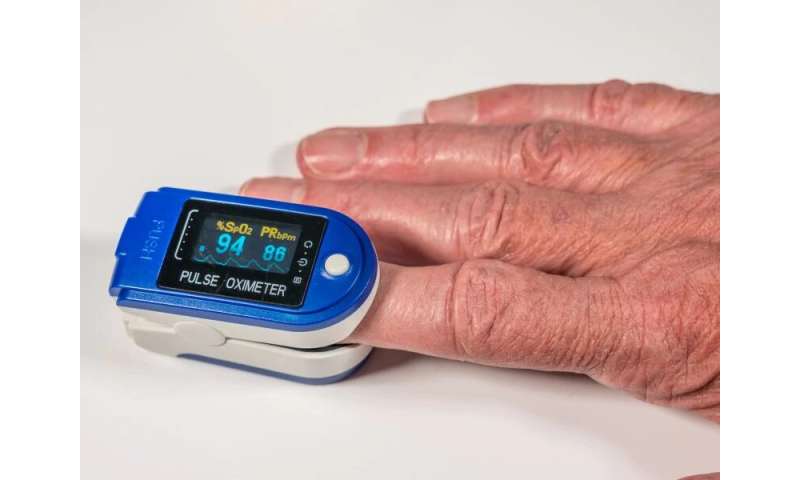
Even though many Americans might not even know what pulse oximeters are, the tiny devices are flying off pharmacy shelves as high-risk folks worry about COVID-19.
That’s because they perform a critical function, measuring the concentration of oxygen in the blood. How? Just clip the device onto a patient’s finger for a reading.
A healthy blood level of “oxygen saturation” normally measures 95-100% on a pulse oximeter, and readings lower than 90% are considered dangerously low.
With shortness of breath a key symptom of severe COVID-19, many people are buying pulse oximeters as “early warning” devices to track their blood oxygen levels, in case they require supplemental oxygen in a hospital.
According to one recent report from CNN, by last Friday pulse oximeters were already sold out on websites of major drugstore chains CVS and Walgreens.
Sales spiked especially after the New York Times published an op-ed article by ER physician Dr. Richard Levitan last Friday. Levitan, who works in Littleton, N.H., volunteered for 10 days at New York City’s Bellevue Hospital recently. He saw that COVID-19 patients who didn’t feel out of breath had falling oxygen levels. Levitan suggested the devices might provide people stuck at home with COVID early warning that hospital treatment was required.
Severe shortness of breath is one key indicator that a person who’s at home with COVID-19 might need to head to the ER. But pulmonary specialist Dr. Len Horovitz said the intensity of breathlessness can vary widely between patients.
In fact, he said, “recent clinical reports reveal that patients with COVID-19 may have significant oxygen desaturation—less than 8%—and yet appear conversant, and not breathless.
“For this reason, it would be helpful if those patients were able to monitor their oxygen saturation so that if they dipped down to the mid-80s or lower, they could use supplemental oxygen [at a hospital],” said Horovitz, who practices at Lenox Hill Hospital in New York City.
Pulse oximeters are already in standard use in hospitals and doctors’ offices nationwide. However, one doctor speaking to CNN stressed that people shouldn’t rely on a pulse oximeter to determine if they are infected with the new coronavirus.
“If the question is, “Would it be a good early indicator if somebody has COVID-19 infection?”, I would say probably not,” said Dr. J. Randall Curtis, a professor of pulmonary and critical care medicine at the University of Washington. That’s because dips in blood oxygen levels typically occur only after COVID-19 has progressed to a more serious stage—long after initial symptoms such as high fever or a dry cough occur.
But once mild-to-moderate COVID-19 has set in, some patients might benefit from a pulse oximeter, said Dr. Eric Cioe-Pena, who directs global health at Northwell Health in New Hyde Park, N.Y.
“If the oxygen level on a pulse ox is less than 90%, that is a concerning sign and a good reason to go to the hospital emergency department,” he said. But he believes that not every American needs to run out and get one of the devices, which typically cost around $50.
“Pulse oximeters are appropriate for patients with COVID-19 who have risk factors for severe disease, like heart or lung problems, diabetes, or those age 60 and over,” Cioe-Pena said. “They are not appropriate for young healthy people.”
Horovitz said there can also be a psychological downside to using a pulse oximeter: “Obsessive checking—as patients do with temperature.”
Hoarding is another issue, he said, with folks who don’t need such monitoring buying up pulse oximeters.
Many factors can lower the accuracy of a standard pulse oximeter, as well. Speaking to CNN, Dr. David Hill listed nail polish, artificial nails, cold hands and poor circulation as potentially interfering with device accuracy.
Source: Read Full Article
